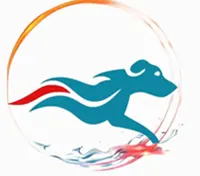Our Training Program Enhances Both You And Your Dog's Skills.
About Our Training Methods
Building a trusting bond with your dog is essential for a happy and healthy relationship. Trust is the foundation of any strong bond, and it is especially important when it comes to your furry friend. Here are a few tips to help you build trust with your dog:
1. Spend quality time together: Dedicate time each day to bond with your dog. This can include activities like playing, training, or simply cuddling. The more time you spend together, the stronger your bond will become.
2. Be consistent: Dogs thrive on routine and consistency. Establish clear rules and boundaries, and stick to them. This will help your dog feel secure and understand what is expected of them.
3. Use positive reinforcement: Reward your dog for good behaviour with treats, praise, and affection. Positive reinforcement is a powerful tool for building trust and reinforcing desired behaviours.
4. Be patient and understanding: Dogs, like humans, have their personalities and quirks. Be patient with your dog and try to understand their needs and emotions. This will help you build empathy and strengthen your bond.
5. Communicate effectively: Learn to understand your dog’s body language and vocal cues. This will help you communicate with them more effectively and build trust. Pay attention to their needs and respond appropriately.
Remember, building trust takes time and effort. Be consistent, patient, and loving, and you will develop a strong and trusting bond with your dog.
Keep your dog agile and fit as much as possible
Keeping your dog agile and fit is important for their overall health and well-being. Regular exercise and mental stimulation are key to maintaining their physical and mental fitness. Here are some tips to help keep your dog agile and fit:
1. Daily exercise: Provide your dog with daily exercise to keep them physically active. This can include walks, runs, playing fetch, or engaging in other activities that get them moving. The amount of exercise needed will depend on your dog’s breed, age, and health, so consult with your veterinarian for specific recommendations.
2. Mental stimulation: In addition to physical exercise, mental stimulation is important for keeping your dog agile and fit. Engage their mind with puzzle toys, interactive games, and training sessions. This helps prevent boredom and keeps their cognitive skills sharp.
3. Agility training: Consider enrolling your dog in agility training classes. Agility training involves navigating through obstacles, which helps improve their coordination, balance, and overall agility. It’s a fun and challenging activity that can keep your dog physically and mentally fit.
4. Playdates and socialization: Arrange playdates with other dogs to provide social interaction and exercise. Dogs love to play and interact with their canine friends, which can help keep them agile and fit. Just make sure the playdates are supervised and the dogs are compatible in terms of size and temperament.
5. Balanced diet: Feed your dog a balanced and nutritious diet to support their overall health and fitness. Consult with your veterinarian to determine the appropriate portion sizes and types of food for your dog’s specific needs.
6. Regular veterinary check-ups: Schedule regular check-ups with your veterinarian to monitor your dog’s health and address any potential issues. They can provide guidance on maintaining your dog’s agility and fitness based on their individual needs.
Remember to always consider your dog’s age, breed, and any specific health conditions when determining their exercise routine. It’s important to provide them with appropriate levels of activity to keep them agile and fit without overexertion.
Teach as many tricks as you can think of
Teaching your dog tricks is not only fun but also a great way to bond with them and stimulate their mind. Here are some tricks you can teach your dog:
1. Sit: Teach your dog to sit on command. Start by holding a treat close to their nose and slowly move it upwards. As their head follows the treat, their bottom will naturally lower into a sitting position. Once they are sitting, say “sit” and reward them with the treat.
2. Stay: Teach your dog to stay in one place until you give them the signal to move. Start by having your dog sit, then hold your hand up in a “stop” gesture and say “stay.” Take a step back and reward them if they stay in place. Gradually increase the distance and duration of the stay.
3. Lie Down: Teach your dog to lie down on command. Start with your dog in a sitting position, then hold a treat close to their nose and slowly move it towards the ground. As they follow the treat, their body will naturally lower into a lying down position. Once they are lying down, say “lie down” and reward them.
4. Shake Hands: Teach your dog to shake hands with their paw. Start by having your dog sit, then gently take their paw in your hand and say “shake” or “paw.” Reward them with a treat and praise. Repeat this until they learn to offer their paw on command.
5. Roll Over: Teach your dog to roll over on command. Start with your dog in a lying down position, then hold a treat close to their nose and slowly move it in a circular motion towards their shoulder. As they follow the treat, their body will naturally roll over. Once they complete the roll, say “roll over” and reward them.
6. Spin: Teach your dog to spin in a circle. Hold a treat close to their nose and slowly move it in a circular motion, guiding them to turn in a circle. Once they complete the spin, say “spin” and reward them.
Remember to use positive reinforcement, such as treats, praise, and affection, when teaching your dog tricks. Break down each trick into small steps and be patient with your dog as they learn. Keep training sessions short and fun, and always end on a positive note. Happy training!
Enhance your dog’s confidence
Building confidence in your dog is important for their overall well-being and can help them navigate the world with more ease. Here are some tips to enhance your dog’s confidence:
1. Positive reinforcement: Use positive reinforcement techniques to reward and encourage your dog’s desired behaviors. When they exhibit confident behavior, such as approaching new situations calmly or overcoming a fear, praise and reward them with treats or verbal praise. This positive reinforcement helps build their confidence and reinforces their belief in their abilities.
2. Socialization: Expose your dog to a variety of people, animals, and environments from a young age. Gradually introduce them to new experiences, such as different sounds, sights, and smells. This helps them become more comfortable and confident in different situations. Ensure that these socialization experiences are positive and not overwhelming for your dog.
3. Training and obedience: Consistent training and obedience exercises can help boost your dog’s confidence. Teach them basic commands and gradually progress to more advanced training. As they master new skills, they will gain confidence in their abilities and become more responsive to your commands.
4. Provide structure and routine: Dogs thrive on routine and structure. Establish consistent daily routines for feeding, exercise, and training. This predictability helps your dog feel secure and confident in their environment.
5. Engage in interactive play: Engage in interactive play sessions with your dog using toys and games that encourage problem-solving and physical activity. This helps stimulate their mind and body, boosting their confidence and overall well-being.
6. Set achievable goals: Set small, achievable goals for your dog and celebrate their successes. Break down tasks into manageable steps, and gradually increase the difficulty as they progress. This helps build their confidence and motivation to take on new challenges.
7. Avoid punishment and negative experiences: Avoid using punishment-based training methods or exposing your dog to negative experiences that may undermine their confidence. Instead, focus on positive reinforcement and creating a supportive and nurturing environment for your dog.
Remember, building confidence takes time and patience. Each dog is unique, so it’s important to tailor your approach to their individual needs and personality. If you’re facing specific challenges with your dog’s confidence, consider consulting with a professional dog trainer or behaviorist for personalized guidance.
Do only things that you know are the best for your dog. Trust your intuition.
Trusting your intuition and doing what you believe is best for your dog is crucial. As a pet owner, you know your dog better than anyone else and have their best interests at heart. Here are a few reasons why trusting your intuition is important:
1. Understanding your dog’s needs: You have a unique bond with your dog and can often sense when something is off or when they need something. Trusting your intuition allows you to better understand their needs, whether it’s physical, emotional, or behaviouralbehaviour. This helps you make decisions that are in their best interest.
2. Recognizing signs of discomfort or stress: Dogs communicate through body language and behavior. By trusting your intuition, you can pick up on subtle cues that indicate your dog may be uncomfortable or stressed. This allows you to take appropriate action and make adjustments to their environment or routine to ensure their well-being.
3. Making informed decisions: When it comes to your dog’s health, safety, and overall care, trusting your intuition can help you make informed decisions. Whether it’s choosing the right food, deciding on medical treatments, or selecting appropriate training methods, your intuition can guide you in making choices that align with your dog’s individual needs.
4. Building a strong bond: Trusting your intuition and acting in your dog’s best interest helps strengthen the bond between you. Your dog relies on you for guidance and care, and when you consistently make decisions that prioritize their well-being, it deepens the trust and connection between you.
While trusting your intuition is important, it’s also essential to seek advice and guidance from professionals, such as veterinarians or trainers, when needed. They can provide valuable expertise and support to ensure you’re making the best decisions for your dog’s health and happiness.
Remember, every dog is unique, and what works for one may not work for another. Trusting your intuition, combined with knowledge and research, allows you to make informed choices that are tailored to your dog’s specific needs.
Dogs work best when they get something for themselves rather than something from you.
While it is true that dogs are motivated by rewards and incentives, it is important to note that the type of reward can vary from dog to dog. Some dogs may be highly motivated by treats or toys, while others may be more motivated by praise, attention, or playtime with their owner. Ultimately, finding what motivates your dog is key to successful training and behaviour modification.
Here are a few points to consider:
1. Positive reinforcement: Positive reinforcement is a widely recommended training method that involves rewarding desired behaviours and behaviour behaviour. This can include treats, praise, toys, or any other reward that your dog finds motivating. By using positive reinforcement, you are providing something that your dog values, which encourages them to repeat the behavior.
2. Finding the right reward: Experiment with different types of rewards to see what your dog responds to best. Some dogs may be food-motivated and will work eagerly for treats, while others may be more motivated by playtime or a favourite toy. Observe your dog’s preferences and adjust your training methods accordingly.
3. Balancing rewards: While it’s important to provide rewards for your dog’s efforts, it’s also crucial to establish a balance. Dogs should not become solely dependent on external rewards and should learn to perform behaviors because they understand and enjoy them. Gradually reduce the frequency of rewards as your dog becomes more proficient in a particular behaviourbehaviours.
4. Building a bond: While dogs may be motivated by rewards, it’s important to remember that they also thrive on the bond and connection they have with their owners. Positive reinforcement training methods, which involve rewards and praise from you, can strengthen the bond between you and your dog.
5. Individual differences: Every dog is unique, and what motivates one dog may not work as effectively for another. Pay attention to your dog’s individual preferences and adjust your training methods accordingly. Some dogs may be more independent and motivated by self-rewarding behavioursbehaviours, while others may seek more interaction and engagement with their owner.
In summary, while dogs are motivated by rewards, the type of reward can vary from dog to dog. It’s important to find what motivates your dog and use positive reinforcement techniques to encourage desired behaviors. By understanding your dog’s individual preferences and needs, you can create a training approach that is effective and enjoyable for both of you.
Regarding Agility, there are a few things we consider very important:
1. Forward focus. Working on teaching them how to change forward focus and back to handler focus on time is one of the most important things to get a good speed on the course.
2. Sends. The dog needs to know what his /her job in the team is,
Knowing how to overcome the obstacles independently from the owner makes things easier and faster.
3. Commitment. The dog needs to perform independently from the owner under commands.
4. Speed. Agility today is not about obstacles… it is about how capable is your dog to do those obstacles in the shortest time possible. For that, you need to work on the fastest way for your dog to negotiate those obstacles regarding lines.
5. Tight Turns. This is a very necessary tool which will allow you and your dog to gain time in Agility and it is very fun to teach.
6. Running Contacts. Has been said a lot about running contacts lately and I would just add that I am a fan of running contacts. I teach all my dogs RC and they love them apart of course, the many more good things about them.
Extraordinary Sponsorship Opportunity: Sponsor West Cork 4 Agility
SPONSORS
Thank you to our main sponsor TRM, who is helping our dogs to perform to the best of their abilities!!! Please check their website if you would like to invest in your dog’s good health.
SAY HELLO
WE’ED LOVE HEARING
FROM YOU
FOLLOW US ON THE FOLLOWING
WEBSITE DESIGNED BY Jerry Kelleher




